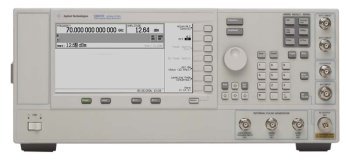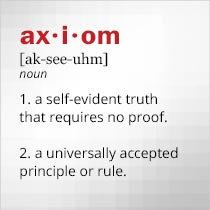Keeping Self-Driving Vehicles on the Road
May 06, 2019
 |
Self-driving cars, also known as autonomous vehicles, are literally right down the road. These electronically guided vehicles of the future will be built with advanced driver assistance system (ADAS) hardware and software, using several different technologies to detect and track other cars, pedestrians, and objects on the road and steer the vehicle and its driver clear of harm. One of the key technologies in vehicular ADAS electronic systems will be 77-GHz radars.
ADAS uses several sensor technologies, such as optical, laser-based LiDAR, and radar sensors, to provide constant input information to a computer control system for each vehicle. The sensors are mounted in the front and the back of the vehicle for longer-distance monitoring and at the four corners of the vehicle, for more short-distance monitoring. The signals from the sensors are transferred from the sensors to a central vehicle computer via an in-vehicle wireless communications network. The central computer is programmed to control the vehicle to take appropriate action, such as swerve out of the way of a pedestrian in the road. The sensors being used in ADAS equipment assume constant involvement on the part of a driver, although many of these sensors are part of evolving electronic sensor systems which will be part of fully autonomous, self-driving vehicles.
Although many ADAS and autonomous vehicle electronic systems are currently being designed with both 24- and 77-GHz radar sensors for short- and long-range coverage, respectively, eventually radar sensors operating from 77 through 81 GHz will provide the radar coverage for self-driving vehicles. The 24-GHz band is considered a temporary application for short-range radar, to be discontinued as the frequency band becomes even more congested with other applications. The 77-GHz frequency band, however, presents a real, long-term opportunity for millimeter-wave test applications for generating and analyzing radar signals. The 77-GHz radar sensors and systems support several safety systems within each ADAS setup, including adaptive cruise control (ACC), blind-spot detection (BSD), forward-collision-warning (FCW), and rear-collision-protection (RCP) systems.
Taking a Test Drive
Commercial vehicles are being produced in large numbers with ADAS protection and both 24- and 77-GHz radar systems and leading semiconductor manufacturers are producing “drop-in” ADAS solutions. Some of these are miniature monolithic microwave integrated circuits (MMICs) while some are higher-level subsystem modules with multiple transmitters, receivers, chirp modulators, and even power-supply circuitry. The 24-GHz radar systems are designed for short-distance target detection, such as might be used to detect the measure the distance to and from an adjoining vehicle in a parking-assistance application.
The 77-GHz radar systems are designed for longer-distance detection, to provide vehicular target detection at distances of 30 to 250 m from the vehicle. They operate with a 1-GHz bandwidth centered at 77 GHz or with a wider 4-GHz bandwidth across the 77-GHz band from 76 to 81 GHz. The wider bandwidths provide enhanced resolution of the detected targets allowing, for example, the differentiation of a bicycle and an automobile from a distance.
These ADAS systems are available now, but how are they maintained and tested? Lower-frequency radar testing involves the use of signal generators, modulators, and signal analyzers, which are readily available at RF and microwave frequencies. But what about test equipment in the millimeter-wave frequency range, which is essentially from 30 to 300 GHz? How can the performance of a 77-GHz automotive radar system be simulated and tested? The chirp radar frequency-modulated FM (FMCW) signals within the automotive radar systems are generated by several different schemes, including frequency-multiplied voltage-controlled oscillators (VCOs), such as a 38.5-GHz VCO with a frequency doubler. Such signals must be duplicated for testing ADAS systems, at the appropriate bandwidths for each radar frequency band (250 MHz at 24 GHz, 1 GHz at 77 GHz, and 4 GHz from 76 to 81 GHz). And they must be analyzed upon their return from an ADAS system under test, typically with a broadband spectrum analyzer or vector network analyzer (VNA).
For example, the Rohde & Schwarz FSW85 spectrum analyzer is well suited for ADAS automotive radar testing at 77 GHz and through 81 GHz. Available for rent, the FSW85 features a modular design and a total available bandwidth of 2 Hz to 85 GHz with analysis bandwidths as wide as 5 GHz. It features several automated radar pulse testing applications to simplify ADAS testing, and a large 12.1-in. screen for viewing results. This is a spectrum analyzer with the performance levels that far exceed any levels by automotive radar systems, with better than 80-dB dynamic range by merit of extremely low phase noise, typically -137 dBc/Hz offset 10 kHz from a 1-GHz carrier. The modular design allows users to select one high-end frequency for now and move to a higher top frequency in the future.
On the signal generation side, few if any commercial signal generators are available capable of generating fundamental test tones through 81 GHz, so some amount of frequency multiplication will be required to generate suitable pulsed test signals for ADAS testing. As an example, the Keysight / Agilent E8257D signal generator provides a broad frequency range from 250 kHz to 40 GHz with fine frequency tuning resolution. With doubling, the signal generator will not reach the full 81-GHz ADAS range but will be fully capable of testing 77-GHz automotive radar systems. The signal generator offers a full complement of modulation formats, including pulsed modulation, frequency modulation, and amplitude modulation with low phase noise and outstanding spectral purity.
Major automotive manufacturers have revealed their intentions of supporting 77-GHz radar and ADAS safety systems in future vehicle models, with millions of these millimeter-wave radar systems soon to be helping to steer vehicles safely around the world. High frequency testing will be an important part of maintaining the safety of ADAS and 77-GHz radar systems, and proper testing begins with the right test gear, available for rent or purchase from Axiom Test Equipment.
More equipment or datasheets on these and many other units is available on our site. For help selecting the right test equipment for your next project, contact Axiom at either 760-806-6600 or sales@axiomtest.com.
Back to BLOG








